
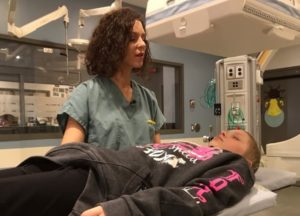 Some 80 pediatric patients took part in pilot project to test effect of hypnosis during stressful procedures.
Some 80 pediatric patients took part in pilot project to test effect of hypnosis during stressful procedures.
Even in a quick demonstration, Vicky Fortin, medical imaging technologist, was able to guide 9-year-old Koraly Lefrançois into a dreamlike state with hypnosis.
Koraly Lefrançois was diagnosed with Hodgkin’s disease last April and has had to undergo some pretty uncomfortable medical procedures at the Montreal Children’s Hospital since then.
The nine-year-old has had a catheter inserted into a peripheral vein and threaded through to her heart, in order for lifesaving treatments to be injected. She underwent a biopsy when a growth was discovered on her inner thigh.
In both procedures, a local anesthetic was used to ease her pain. But that does little to soothe anxiety.
That’s where hypnosis comes in.
“At first I was stressed, but after, I was less worried,” Koraly said. “The hypnosis calmed me down, and I was fine.”
Koraly is one of about 80 pediatric patients who participated in what is being touted as a successful pilot project at the Children’s — the use of medical hypnosis as a tool to combat stress and pain when undergoing arduous, protracted procedures.
On a pain and discomfort scale of zero to 10 (10 being the highest), the young patients averaged a score of 5.4 without hypnosis, researchers found.
Under hypnosis, the average score drops to 1.4. That’s a huge difference, said Johanne L’Écuyer, chief medical imaging technologist at the 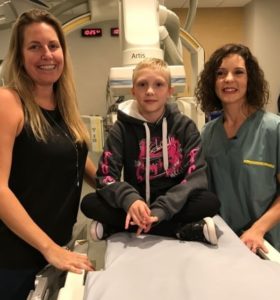 Children’s.
Children’s.
Inspired by hospitals in France
L’Écuyer, who led the project, said the research team started with minor procedures, working their way up to longer, more difficult ones. The project ended in September, and now the use of hypnosis is increasingly common, she said.
“We do more and more. We do even more invasive procedures as we go,” L’Écuyer said.
“The more radiologists are seeing how powerful this is, the more they push to have hypnosis on longer procedures. Once we did a procedure that lasted two hours.”
Johanne L’Écuyer, chief medical imaging technologist at the Montreal Children’s, led the hypnosis pilot project. Hypnosis is now being used more and more, she says. (CBC)
The pilot project was initiated at the urging of Quebec’s order of medical imaging technologists. The order’s director attended a conference in France a few years ago and discovered the practice in use there.
When he returned to the province, he asked L’Écuyer if she’d like to look into it.
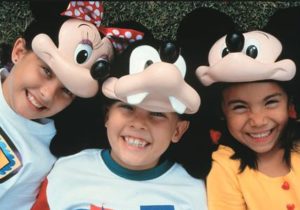 She said she brought a team to France to visit hospitals, and “what we saw there was amazing.”
She said she brought a team to France to visit hospitals, and “what we saw there was amazing.”
Anne Zeestraten, left, says her daughter Koraly Lefrançois benefited from the hypnosis. Vicky Fortin, Koraly’s medical imaging technologist, says she could see her patient dreaming.
Koraly, who is now in remission, would dream while hypnotized, according to her medical imaging technologist, Vicky Fortin. Fortin would tell her young patient a relaxing story while she underwent each procedure.
“You could see her eyes moving under her eyelids, and that tells me that she’s dreaming,” Fortin recalled.”She’s somewhere else. She’s under hypnosis.” Koraly’s mother, Anne Zeestraten, said with the hypnosis, her daughter wasn’t scared when told she had to undergo a second procedure.
“She was like, ‘OK, yeah, just find some other dream.'”
By: Isaac Olson

 This study assesses the effect of hypnosis for insomnia with school-age children, ranging from ages 7-17, dealing with stressors and medical conditions.
This study assesses the effect of hypnosis for insomnia with school-age children, ranging from ages 7-17, dealing with stressors and medical conditions.
The study included 84 children and adolescents with insomnia. All were instructed in self-hypnosis for treatment of insomnia.
Seventy-five patients returned for follow-up after the first hypnosis session. When insomnia did not resolve after the first instruction session, patients were offered the opportunity to use hypnosis to gain insight into the cause.
Use of hypnosis appears to facilitate efficient therapy for insomnia in school-age children. 87% reported improvement or resolution of the somatic complaints following hypnosis. [more]
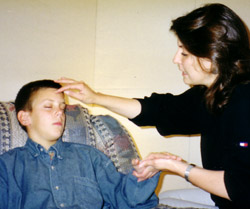 Children are often better candidates for hypnosis than adults, says one clinical psychologist, and the process can help resolve such problems as pain, anxiety, bed wetting, and asthma.
Children are often better candidates for hypnosis than adults, says one clinical psychologist, and the process can help resolve such problems as pain, anxiety, bed wetting, and asthma.
Robert Shacter of New York’s Mount Sinai School of Medicine talked about children and hypnosis on The Saturday Early Show. He says children tend to respond to hypnotic suggestion better than adults because they are more in touch with their imaginations.
Children can be hypnotized as early as age 3, he says, adding, “But in my personal experience, I have found that children ages 5 or older respond best to the treatment.”
The easiest way to hypnotize a child is to have them focus on a point, he explains. They will do that until their eyes begin to feel heavy, and they become sleepy. You now have them in a trance-like state. Once they are in this state, you begin to tell the child stories that can alleviate whatever problems they may have.
What role, if any, does the parent play during a hypnosis session?
As in any therapy, it is important for parents to know what is going on. But in the actual session the parent is either not there or in the background. So, they really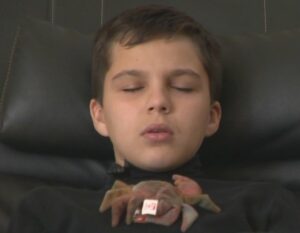 don’t play any part in the actual therapy.
don’t play any part in the actual therapy.
How many times does a typical child visit a hypnotist?
Most children attend 4 to 8 sessions with a qualified hypnotist. During that time, the hypnotist can teach a child how to hypnotize himself.
How do I know if my child if a candidate for hypnosis?
Most children are good candidates. It just depends on whether the problems they are having can be helped by hypnosis.
Here are some of the problems that might be helped by hypnosis:
- Hypnosis is very effective at alleviating the pain of children undergoing cancer treatments. What we do is help the child go somewhere else, away from the pain. By accessing the unconscious, the child creates images that forces them to focus on something other than the pain they are feeling.
 For example, if you squeezed your hand very tightly to the point that it hurt and then someone asked you to focus on something else, you would not be as aware of the pain in your hand.
For example, if you squeezed your hand very tightly to the point that it hurt and then someone asked you to focus on something else, you would not be as aware of the pain in your hand.
- A child who is anxious often breathes more quickly and has a higher heart rate. With hypnosis, we can teach them to breathe more slowly, lower their heart rate and take them away from whatever is making them anxious.
- Bed Wetting.Many doctors prescribe medicine for children who have a bed-wetting problem. But now more physicians are turning to hypnosis, which has very positive results. Part of the reason that it works so well is that kids play an active role in their treatment rather than just taking a pill.
- When children with asthma feel their throats constricting, they begin to feel anxious and breathe more heavily. With hypnosis, you teach the child to calm down and bring them to another place.
How effective is hypnosis in children?
In the right child, hypnotism can be very successful. Remember: There are some children who have a harder time letting go. But for those who can, the results can be very positive. Another plus of hypnosis is that unlike drugs, the risk of harm is low.
Why aren’t more doctors using hypnotism?
It’s just not taught that much in schools, and some people still don’t want to recognize it as a viable alternative. However, it is becoming more popular, and many insurers will cover it.
By: Ellen Crean CBS News

Hypnosis is a clinical technique typically used to treat conditions like anxiety and pain but some say it could also help as a parenting tool. “Hypnosis and parenting is a natural solution,” Lisa Machenberg, a hypnotherapist and mother of three, told ABC News. “You naturally influence your child anyway, let’s learn how to do it with intention.”
Machenberg began hypnotizing her own children to help them get through the night without wetting the bed. She now uses it as a tool to help her kids deal with everything from performance anxiety to difficulties focusing.

“My children are able to use logic and reason,” she explained. “They have a form of diligence or perseverance that you don’t see in other children.”There is no science to support the idea that hypnosis is an effective parenting tool. The method, experts say, should only be done by trained clinicians.
Machenberg charges $125 per hour for her sessions and said she has worked with more than 1,000 kids in her years of practice. She also works with parents on strategies they can try at home and teaches kids self-hypnosis strategies.
Machenberg’s 17-year-old daughter, Rayna, said she has “always known” that her mom used hypnosis on her and said it has had a positive impact on her life. “Being able to push back on stress and think about it deeply and do self-reflecting was a skill that I’m really grateful that my mom taught me,” she said. “I think it still influences me a lot today and helped me develop into the person I am right now.”
ABC News Chief Health and Medical Editor Dr. Richard Besser, whose parents are both clinical hypnotists, said hypnosis works for shaping behavior but the evidence is still out on whether or not it is a good tool for children.
“The evidence on the clinical use is really, really strong,” Besser said. “I haven’t seen that kind of evidence for parenting and that bothers me a little bit.”
Besser said other strategies parents can use to help their kids perform better include offering praise for good behaviors, using a star chart for school-age kids to track achievements and staying consistent on discipline and expectations. “Not idle threats,” Besser said, adding again that hypnosis should only be done by a trained professional.
By: ABC News
Children are often better candidates for hypnosis than adults, says one clinical psychologist, and the process can help resolve such problems as pain, anxiety, bed wetting, and asthma.
Robert Shacter of New York’s Mount Sinai School of Medicine talked about children and hypnosis on The Saturday Early Show. He says children tend to respond to hypnotic suggestion better than adults because they are more in touch with their imaginations.
Children can be hypnotized as early as age 3, he says, adding, “But in my personal experience, I have found that children ages 5 or older respond best to the treatment.”
Here is part of a pre-interview with Robert Shacter.
The easiest way to hypnotize a child is to have them focus on a point, he explains. They will do that until their eyes begin to feel heavy, and they become sleepy. You now have them in a trance-like state. Once they are in this state, you begin to tell the child stories that can alleviate whatever problems they may have.
What role, if any, does the parent play during a hypnosis session? As in any therapy, it is important for parents to know what is going on. But in the actual session the parent is either not there or in the background. So they really don’t play any part in the actual therapy.
How many times does a typical child visit a hypnotist? Most children attend 4 to 8 sessions with a qualified hypnotist. During that time, the hypnotist can teach a child how to hypnotize himself.
How do I know if my child if a candidate for hypnosis? Most children are good candidates. It just depends on whether the problems they are having can be helped by hypnosis.
Here are some of the problems that might be helped by hypnosis:
- Pain. Hypnosis is very effective at alleviating the pain of children undergoing cancer treatments. What we do is help the child go somewhere else, away from the pain. By accessing the unconscious, the child creates images that forces them to focus on something other than the pain they are feeling.
For example, if you squeezed your hand very tightly to the point that it hurt and then someone asked you to focus on something else, you would not be as aware of the pain in your hand.
- Anxiety. A child who is anxious often breathes more quickly and has a higher heart rate. With hypnosis, we can teach them to breathe more slowly, lower their heart rate and take them away from whatever is making them anxious.
- Bed Wetting. Many doctors prescribe medicine for children who have a bed-wetting problem. But now more physicians are turning to hypnosis, which has very positive results. Part of the reason that it works so well is that kids play an active role in their treatment rather than just taking a pill.
- Asthma. When children with asthma feel their throats constricting, they begin to feel anxious and breathe more heavily. With hypnosis, you teach the child to calm down and bring them to another place.
How effective is hypnosis in children? In the right child, hypnotism can be very successful. There are some children who have a harder time letting go, but for those who can, the results can be very positive. Another plus of hypnosis is that unlike drugs, the risk of harm is low.
Why aren’t more doctors using hypnotism? It’s just not taught that much in schools, and some people still don’t want to recognize it as a viable alternative. However, it is becoming more popular, and many insurers will cover it.
By: Ellen Crean

 Some 80 pediatric patients took part in pilot project to test effect of hypnosis during stressful procedures.
Some 80 pediatric patients took part in pilot project to test effect of hypnosis during stressful procedures. Children’s.
Children’s. She said she brought a team to France to visit hospitals, and “what we saw there was amazing.”
She said she brought a team to France to visit hospitals, and “what we saw there was amazing.”

 This study assesses the effect of hypnosis for insomnia with school-age children, ranging from ages 7-17, dealing with stressors and medical conditions.
This study assesses the effect of hypnosis for insomnia with school-age children, ranging from ages 7-17, dealing with stressors and medical conditions. Children are often better candidates for hypnosis than adults, says one clinical psychologist, and the process can help resolve such problems as pain, anxiety, bed wetting, and asthma.
Children are often better candidates for hypnosis than adults, says one clinical psychologist, and the process can help resolve such problems as pain, anxiety, bed wetting, and asthma. don’t play any part in the actual therapy.
don’t play any part in the actual therapy. For example, if you squeezed your hand very tightly to the point that it hurt and then someone asked you to focus on something else, you would not be as aware of the pain in your hand.
For example, if you squeezed your hand very tightly to the point that it hurt and then someone asked you to focus on something else, you would not be as aware of the pain in your hand.









